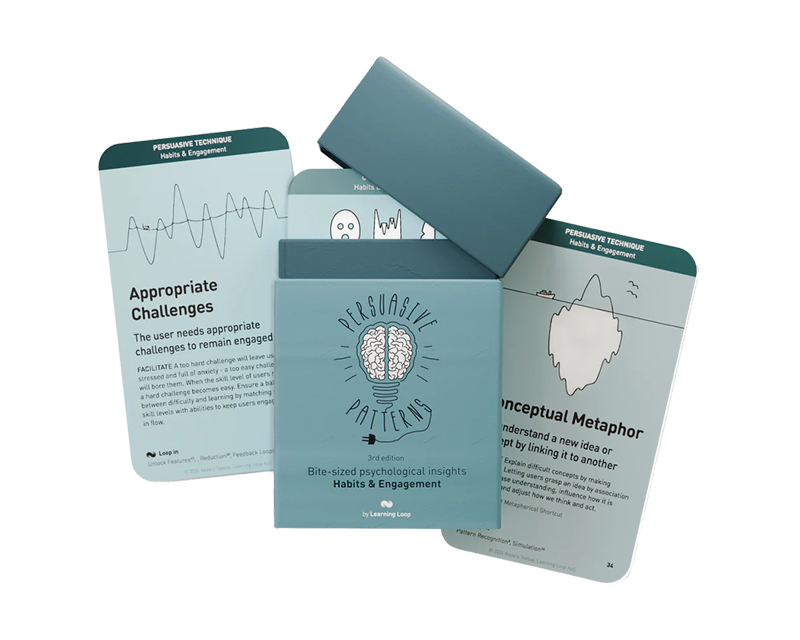Persuasive Patterns: Training, Temptation
Competition
We strive to attain things that cannot be shared

Competition as a lever for design is the incorporation of elements that pit users against one another or against a standard, driving them to achieve more or engage deeper based on the inherent human desire to compete and excel.
In a small town, there was a tradition where every year, residents would participate in a gardening competition. The goal was simple: grow the most beautiful flower in your front yard. As spring approached, neighbors would often peek over fences, subtly gauging the progress of others’ flowers. Some would exchange tips, while others kept their gardening techniques a secret. The anticipation of the competition led many to invest more time and effort into their gardens, not just for the prize but for the pride of being recognized by their community. The competition not only beautified the entire town but also fostered a sense of community and camaraderie among the residents.
Transitioning from the town’s gardening competition, imagine an online community platform where users share and discuss their personal projects, be it art, writing, or any other hobby. On this platform, there’s a monthly challenge where members are encouraged to create something based on a specific theme. Just like the gardeners in the town, users of this platform eagerly participate, showcasing their work and viewing others’. They give and receive feedback, learn from one another, and strive to improve. The platform’s monthly challenge not only motivates users to consistently engage and produce content but also strengthens the bond within the community. Members feel a sense of belonging, knowing they’re part of a group that shares their passion and drive.
The study
A. In the 1960s, an intriguing study was conducted at a school where children were observed during their free playtime. Initially, the children were left to their own devices, and many took to drawing with available crayons. Later, the children were rewarded with ribbons for their drawings, simulating a competitive environment. Interestingly, after the introduction of this reward system, the children who previously enjoyed drawing for the sake of it were now less inclined to draw unless a ribbon was at stake. This study underscored the profound impact of external rewards on intrinsic motivation, illuminating the delicate balance of competition in influencing behavior.
Deci, E. L. (1971). Effects of externally mediated rewards on intrinsic motivation. Journal of Personality and Social Psychology, 18(1), 105-115.
The pattern of competition largely draws from the principle of extrinsic motivation, which posits that behaviors are driven by external rewards or threats, as opposed to intrinsic motivation, which stems from personal satisfaction or interest.
From sports to business to academics, the desire to outperform others or meet a certain standard can be a powerful motivator. In design, leveraging competition can encourage users to engage more frequently, strive for excellence, or remain loyal to a platform or service. This pattern can be seen in leaderboards, challenges, badges, or any feature that allows users to measure their performance against others or against a set benchmark.
Competition in product design primarily hinges on the psychological principle of social comparison. Originated by Leon Festinger in 1954, the Social Comparison Theory posits that individuals are innately driven to evaluate their own abilities and opinions in relation to others. This stems from the inherent human need to gain certainty about oneself in the absence of objective benchmarks.
Two main types of social comparison can be identified:
- Upward Comparison
Here, individuals compare themselves to those they perceive as superior or better in certain aspects. This type of comparison can be motivational, encouraging individuals to improve and reach higher standards. However, it might also result in feelings of inadequacy or inferiority if not moderated. - Downward comparison
In this case, individuals compare themselves to those they deem as inferior or less capable. Such comparisons can often serve to boost self-esteem or offer solace in challenging times, but can also lead to complacency if over-relied upon.
Competition, as a design pattern, leverages this inherent human behavior by creating environments where individuals are explicitly or implicitly compared to others, driving behaviors such as increased effort, motivation to improve, or even strategic thinking to outperform peers.
Furthermore, the interplay of intrinsic and extrinsic motivation plays a significant role in competition. While intrinsic motivation refers to the internal desire to perform an activity for its inherent satisfaction, extrinsic motivation is driven by external rewards or outcomes. In competitive scenarios, these external rewards (like trophies, points, or recognition) amplify the effects of social comparison, further driving individuals to compete.
Designing products with Competition
Competition taps into our innate desire to achieve, to stand out, and to measure ourselves against others. Yet, its implementation requires careful calibration to ensure it serves as a motivator and not a detractor.
When weaving competition into a product, it’s important to first establish clear objectives. Is the aim to foster user engagement, to boost learning outcomes, or perhaps to stimulate community interaction? Once this foundational query is addressed, the mechanics of competition can be tailored to align with these goals.
Leaderboards are a go-to feature to foster a competitive environment, offering users a tangible measure of their performance against peers. Yet, it’s important to approach them with sensitivity. Instead of solely spotlighting the elite performers, consider also highlighting users who’ve made significant progress (climbers) or those who’ve consistently engaged – creating a multitude of leaderboards each celebrating its own metric. This approach not only celebrates top achievements but also recognizes effort and dedication, ensuring a wider range of users feel valued and motivated. Yet, having a community of thousands, leaderboards can only reward the top 1%. How do you make sure the remaining 99% aren’t disgruntled?
Another facet to consider is the balance between individual and team-based competition. While individual competitions allow users to shine on their own merits, team-based challenges can foster collaboration and community building. Products can oscillate between these modes or even offer them concurrently, catering to varied user preferences.
Feedback mechanisms are another cornerstone. Regular updates on performance, insights into areas of improvement, and celebrations of milestones can make the competitive experience more enriching. Providing users with tools to track their progress, set personal goals, or even challenge peers directly can add layers of depth to the competitive framework.
Not every platform requires fierce competition. Gauge your target audience’s appetite for competition and adjust the intensity accordingly. Common pitfalls when designing for competition include:
- Overemphasis on winners
Designing a system where only the top performers or “winners” receive all the recognition can demotivate a larger portion of the user base. Systems that only reward the top 1% might discourage the remaining 99% from even participating. - Ignoring the value of cooperation
Solely focusing on competition can undermine the value of community and cooperation. Integrate elements that also celebrate teamwork and collaboration. - Overcompetitive environment
Too much competition can create a toxic environment, leading to stress, anxiety, or even cheating. If users feel the only way to succeed or get recognition is through constant competition, it can diminish the enjoyment or primary value of the product. - Not suitable for all users
Not everyone is motivated by competition. Some users might feel alienated or stressed by competitive features. It’s essential to ensure there are other non-competitive pathways or modes for these users. - Diminished intrinsic motivation
Introducing external rewards for an activity that was previously done for intrinsic satisfaction can decrease the inherent joy derived from it. Over time, users might only engage in an activity if there’s a competitive reward attached, diminishing the original intent or joy of the activity. - Short-term engagement
While competition can drive short-term engagement spikes, relying solely on it for long-term retention can be a mistake. Once the competitive event ends, users might lose interest if there’s nothing else to keep them engaged. - Complex rules or barriers
If the competitive element has too many rules, prerequisites, or is difficult to understand, it might deter users from participating.
Just as a knife can be used to prepare a meal or cause harm, competition can either build or break communities. To navigate these pitfalls, let’s look at what strategies can ensure that your designs foster healthy competition and create vibrant communities.
The competitive spectrum is a continuum that categorizes communities based on their inherent competitiveness. At one end, we have caring communities where members primarily help and support each other. These communities are characterized by members offering advice, solace, or comfort. At the opposite end lie combative communities, where members have opposing goals, and for one to succeed, the others must necessarily face setbacks.
| Caring | Collaborative | Cordial | Competitive | Combative | |
Goals |
Members help each other | Members share goals | Own non-conflicting goals | Members share goals | Opposing goals |
Actions |
Give each other advice, solace, or comfort | Work together to achieve shared goals | Intrinsically motivated actions | Work against each other to achieve goals | For one to achieve goal, others must necessarily be denied their own |
| Identify community members of good standing, so that others can find them for advice and guidance. | Identify community members with a proven track-record of being trustworthy partners. | Show a member's history of participation, that others may get a general sense for their interests, identity and values. | Show a member's level of accomplishment, that others may acknowledge (and admire) their level of performance. | Show a member's history of accomplishments, including other members' victories and defeats against them. Reputation is used to establish bragging rights. |
Table 12. The competitive spectrum as described by the Yahoo! Design Pattern Library team in 2009. Not online anymore.
Between these two extremes, we find collaborative communities where members work together to achieve shared goals, cordial communities where members have their own non-conflicting goals, and competitive communities where members, while sharing the same goals, must compete against each other to achieve them.
Before implementing any reputation system, pinpoint where your community lies on the competitive spectrum. This will guide you on which specific reputation patterns to introduce. In competitive communities, members are driven by extrinsic rewards like points, levels, or ranks. But in collaborative communities, it’s the intrinsic rewards, like the satisfaction of collaboration or the joy of shared success, that reign supreme. Designers must tailor their reward systems accordingly.
The way you reward actions will either bridge or widen the perceived gap between community members. Rewarding competitive actions emphasizes differences, while rewarding collaborative actions brings members closer. These two extremes on the spectrum represent the most cohesive and most divided communities, respectively. In caring communities, the focus should be on building deeper connections and fostering mutual support. In combative ones, clear rules and conflict resolution mechanisms are essential to prevent escalation.
Ethical recommendations
Competition has long been utilized as a mechanism to engage, motivate, and retain users in digital platforms. When implemented effectively, it can drive user engagement, foster community, and enhance the overall user experience. However, the competitive element, if not approached with care and ethical considerations, can lead to manipulation, misuse, and potential harm to user well-being. This chapter aims to provide clear ethical recommendations for designers and developers looking to incorporate competition into their digital products.
- Always be transparent
Ensure that the rules, objectives, and mechanics of any competitive element are transparent. Users should have a clear understanding of how the competition works, what they are competing for, and how winners are determined. - Avoid zero-sum games
In a zero-sum game, one user’s gain is another’s loss. Such competitions can breed hostility and lead to a toxic environment. Whenever possible, opt for positive-sum games, where multiple participants can achieve success without it being at the expense of others. - Ensure fair play
Avoid designing systems that favor a particular group of users or allow for easy exploitation. This includes ensuring that algorithms determining winners are unbiased and that measures are in place to prevent cheating. - Recognize effort, not just achievement
While it’s natural to reward top performers, it’s equally important to recognize and celebrate the effort and progress of all participants. This ensures that even those who might not be “winning” still feel valued and motivated. - Limit the intensity of competition
Overly aggressive competition can lead to stress, anxiety, and burnout. Designers should incorporate breaks, limits, or cooldown periods to prevent users from becoming overly consumed by the competitive aspect of a product. - Provide opt-out mechanisms
Not everyone enjoys competition. Ensure there are alternative pathways or modes where users can experience the product without being subjected to competitive pressures. - Monitor and act on user feedback
Users often provide valuable feedback on how they perceive the competitive elements of a product. Regularly monitor this feedback and be prepared to make adjustments to address any concerns or negative experiences.
Real life Competition examples
Strava
The fitness app for runners and cyclists features segments where users can compare their times against others who have completed the same route or segment. Achieving the fastest time on a segment crowns the user as the “King or Queen of the Mountain,” fostering a competitive spirit among athletes.
Salesforce
In the corporate world, Salesforce gamifies its CRM platform with competitive elements. Sales teams can compete in challenges, and individual achievements are highlighted on leaderboards, driving performance through competition..
Kahoot!
The educational platform allows teachers or hosts to create live quizzes where faster and correct responses earn more points. A live leaderboard after each question shows the top performers, making the learning process interactive and competitive.
Trigger Questions
- What is the primary objective of introducing competition? Is it to increase user engagement, enhance learning outcomes, foster community interaction, or achieve another specific goal?
- How can competition be designed to cater to the varying appetites for competition among users, ensuring both competitive and non-competitive users find value?
- How can the design recognize and celebrate not just the top performers but also those who show consistent effort, improvement, or collaboration?
- What mechanisms can be put in place to prevent the potential negative consequences of competition, such as stress, anxiety, or toxic behaviors?
- How can the design strike a balance between extrinsic rewards (e.g., badges, points) and fostering intrinsic motivation (e.g., personal satisfaction, passion)?
- Where does the community lie on the competitive spectrum (from caring to combative)? How can the design encourage healthy competition that fosters camaraderie and community, rather than division?
Pairings
Competition + Rewards
Enhancing competition with extrinsic rewards, such as badges or points, can further incentivize participation. For instance, Duolingo uses this combination effectively by allowing users to compete in leaderboards for weekly points.

We strive to attain things that cannot be shared

Use rewards to encourage continuation of wanted behavior
Competition + Achievements
Achievements provide milestones for users to reach, and when combined with competition, they can motivate users to surpass their peers. Many video games utilize this combination, where players compete to unlock achievements faster than others.

We strive to attain things that cannot be shared
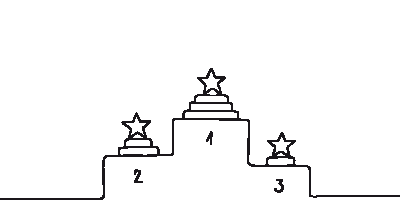
We are engaged by activities in which meaningful achievements are recognized
Competition + Status
By giving users a status based on their competitive performance, platforms can encourage continued participation. LinkedIn, for example, uses the “All-Star” profile status, nudging users to complete their profiles and ‘compete’ with others.

We strive to attain things that cannot be shared

We constantly look to how our actions improve or impair how others see us
Competition + Levels
Introducing levels in competitive environments can offer a structured pathway for progression. For example, in “Duolingo”, users compete in different language learning levels, with each tier offering a greater challenge, motivating users to continue their competitive journey.

We strive to attain things that cannot be shared

Use levels to communicate progress and gauge users' personal development
Competition + Goal-Gradient Effect
As users get closer to a goal, their efforts often increase. Combining this with competition can amplify user efforts. Fitbit challenges, where users compete to achieve step goals, exemplify this pairing.

We strive to attain things that cannot be shared
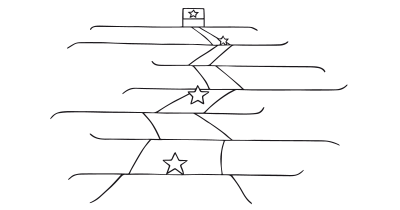
Our motivation increases as we move closer to a goal
Competition + Recognition over Recall
In platforms where users compete based on knowledge or recall, recognizing top performers can enhance their motivation. QuizUp, a trivia game, showcases top players in various categories, combining competition with recognition.

We strive to attain things that cannot be shared
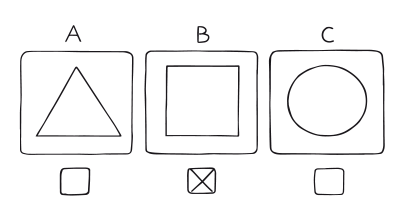
We are better at recognizing things than we are recalling them from memory
Competition + Role Playing
Merging competitive elements with role-playing can deeply immerse users in an experience. For example, in multiplayer online role-playing games (MMORPGs) like “World of Warcraft”, players not only assume character roles but also compete in guilds or teams against others.

We strive to attain things that cannot be shared
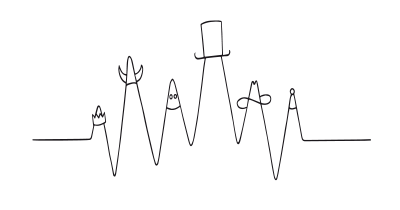
People act according to their persona
Competition + Feedback Loops
Positive feedback loops can reinforce competitive behavior. Platforms like “Strava”, which is used for tracking exercise, provide feedback in the form of segments where users can compete against their past performance and others, encouraging them to improve.

We strive to attain things that cannot be shared
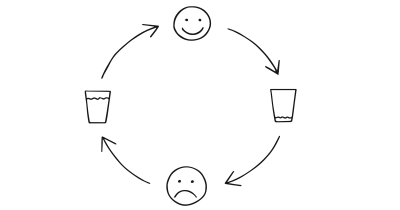
We are influenced by information that provides clarity on our actions
Competition + Tunneling
Guiding users through a competitive journey step by step can enhance engagement. This can be observed in games with campaign modes, where users are channeled through competitive stages, each with increasing difficulty.

We strive to attain things that cannot be shared
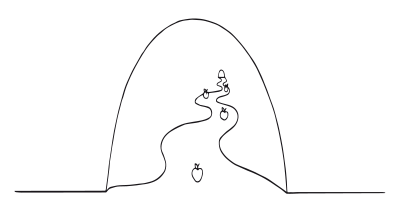
Close off detours from a committed journey
Competition +
Set Completion
Combining the urge to complete sets with competition can be very engaging. For instance, platforms like “Topps Collectible Cards” app allow users to collect digital cards and compete against others to complete specific sets first.

We strive to attain things that cannot be shared
Competition + Anchoring Bias
By setting a reference point, such as a leaderboard top position or a high score, users are anchored to a specific target, pushing them to compete more fiercely to achieve or surpass that anchor.

We strive to attain things that cannot be shared
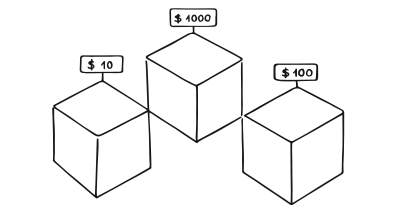
We tend to rely too heavily on the first information presented
Competition + Commitment Devices
Encourage users to commit to a competitive goal publicly. Fitness apps, where users pledge to achieve a certain rank or complete challenges within a timeframe, can leverage both competition and commitment.

We strive to attain things that cannot be shared
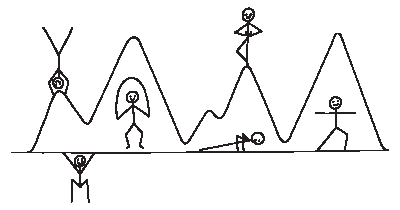
Make it easier for users to avoid acting against one's better judgment
Competition + Endowment Effect
When users invest time and effort into a competitive platform, they value their achievements more. This can be seen in platforms like “Clash Royale” where users collect and upgrade cards, making them more invested in competing with their personalized decks.

We strive to attain things that cannot be shared

We value objects more once we feel we own them
Competition + Unlock Features
As users progress in their competitive journey, they can unlock new features or tools that aid their performance. In games like “Fortnite”, users compete to earn rewards that unlock unique abilities or aesthetics, adding layers to the competitive experience.

We strive to attain things that cannot be shared

Reward specific behaviors by enabling new capabilities
Competition + Privileges
By weaving competition with privileges, users can earn exclusive rights or features based on their competitive success. For instance, a learning platform might grant top-performing users access to premium content or specialized forums where they can interact with experts.

We strive to attain things that cannot be shared
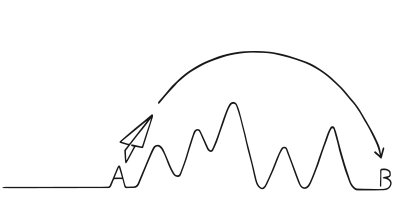
Give users a way to reach their goal more quickly than they could before
Competition + Prolonged Play
Competing can be a strong motivator for users to engage with a platform for extended periods. In games like “Candy Crush”, achieving higher scores or beating friends can keep users playing for longer, aiming to reach new milestones.

We strive to attain things that cannot be shared
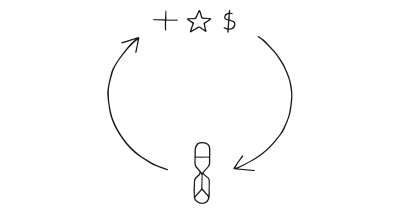
Reward users by extending their game time
A brainstorming tool packed with tactics from psychology that will help you build lasting habits, facilitate behavioral commitment, build lasting habits, and understand the human mind. It is presented in a manner easily referenced and used as a brainstorming tool.
Get your deck!Related plays
- Achievements
- Appropriate Challenges
- Authority Bias
- Commitment Devices
- Competition
- Endowment Effect
- Feedback Loops
- Framing Effect
- Goal-Gradient Effect
- Levels
- Loss Aversion
- Positive Mimicry
- Privileges
- Prolonged Play
- Recognition over Recall
- Reputation
- Rewards
- Role Playing
- Status
- Tunneling
- Unlock Features
- Role Playing
- Six Patterns for Persuasion in Online Social Networks by Weiksner, Fogg & Liu
- Persuasive Technology: Using Computers to Change What We Think and Do by Fogg
- Competition at Wikipedia (en)
- Deci, E. L. (1971). Effects of externally mediated rewards on intrinsic motivation. Journal of Personality and Social Psychology, 18(1), 105-115.
- Deci, E. L., Koestner, R., & Ryan, R. M. (1999). A meta-analytic review of experiments examining the effects of extrinsic rewards on intrinsic motivation. Psychological Bulletin, 125(6), 627-668.
- Tversky, A., & Kahneman, D. (1981). The framing of decisions and the psychology of choice. Science, 211(4481), 453-458.
- Festinger, L. (1954). A theory of social comparison processes. Human Relations, 7(2), 117-140.
- T. Leclercq, Wafa Hammedi, & Ingrid Poncin. (2018). The Boundaries of Gamification for Engaging Customers: Effects of Losing a Contest in Online Co-creation Communities. Journal of Interactive Marketing, 44, 82-101.
- J. Kumar & Vikas Kumar. (2020). Drivers of brand community engagement. Journal of Retailing and Consumer Services, 54, 101949.
- Self-Determination Theory by Anders Toxboe
